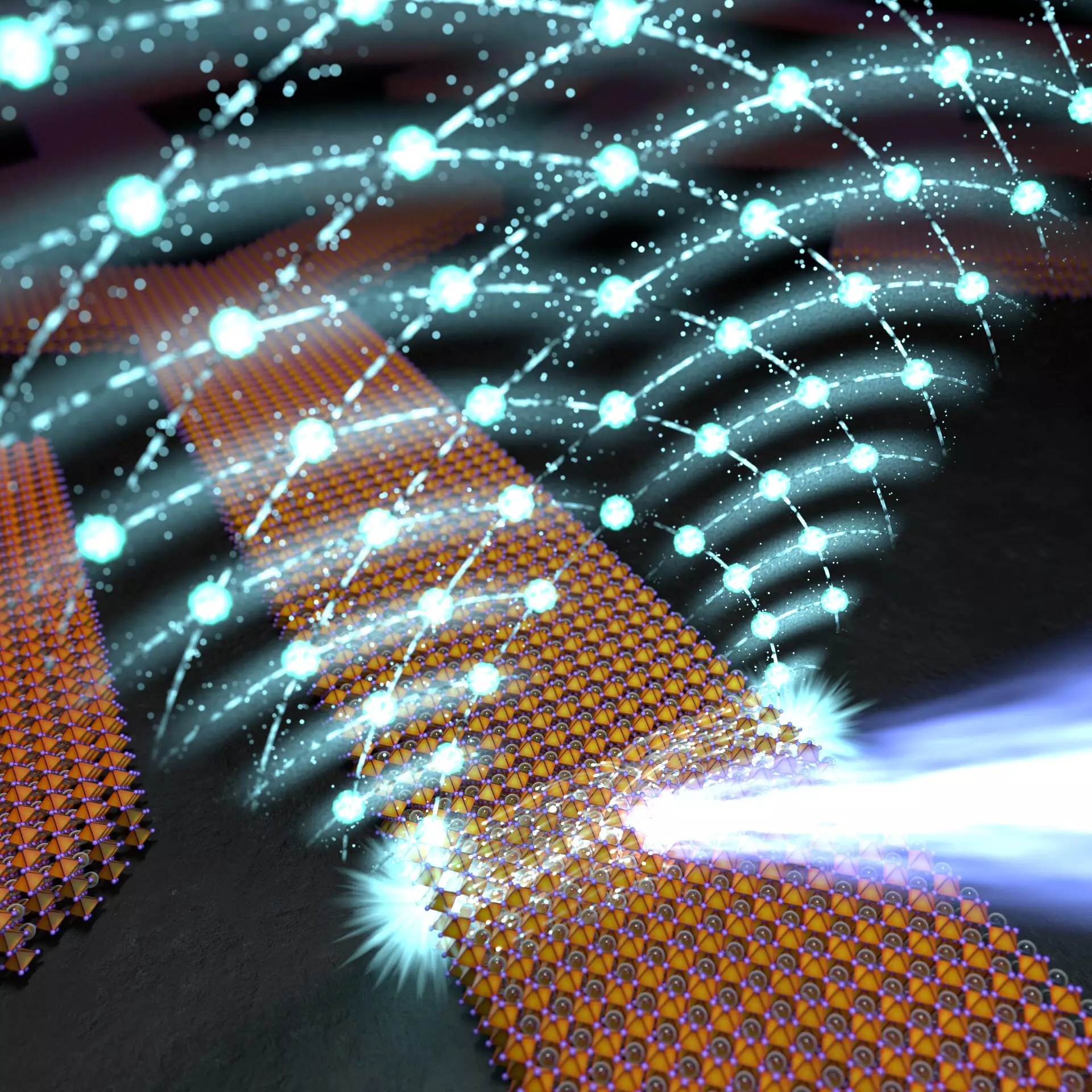The field of photonics is on the cusp of a revolutionary transformation, driven by advancements in integrated photonic circuits that function at room temperature. Recent research from the Faculty of Physics at the University of Warsaw, in collaboration with international partners from Italy, Iceland, and Australia, has showcased the potential of perovskite crystals as essential components in nonlinear photonics. These crystals are set to redefine classical and quantum signal processing by serving critical roles such as waveguides, couplers, splitters, and modulators. By harnessing the extraordinary properties of these materials, scientists are paving the way towards innovative applications in both telecommunications and quantum computing.
Perovskites, particularly the cesium-lead-bromide variant (CsPbBr3), exhibit impressive semiconductor properties due to their high exciton binding energy and robust oscillator strength. These traits enable enhanced light interaction, which is vital for achieving nonlinear light amplification—a crucial element in optical signal processing. Professor Barbara Piętka from the University of Warsaw highlights the versatility of perovskites, indicating their potential applications span from solar cells to advanced lasers. This versatility is further enhanced by the ability to fabricate these crystals into specific shapes and dimensions, fundamentally broadening their applicability in various optical devices.
The breakthrough research hinges on the development of repeatable and scalable synthesis methods that allow for the production of perovskite crystals with unprecedented precision. By utilizing a microfluidic approach, researchers were able to grow these crystals from solution within narrow polymer molds that can be shaped to adhere to any desired template. This method emphasizes the collaborative efforts in controlling key parameters such as solution concentration and temperature, while maintaining a saturated solvent vapor atmosphere. The result is the formation of high-quality single crystals that maintain atomically smooth surfaces, ensuring optimal performance in photonic applications.
As detailed by Mateusz Kędziora, a doctoral student and lead author of the published research, the formation of these perovskite crystals supports the development of Fabry-Pérot type resonators along their surfaces. This characteristic allows for the observation of strong nonlinear effects without relying on external mirrors, thus enhancing the potential for their integration into compact photonic circuits.
Edge Lasing and Exciton-Polariton Dynamics
Perhaps one of the most exciting developments discussed in the research is the phenomenon of edge lasing observed in the perovskite microwires. This effect is associated with the formation of a condensate of exciton-polaritons—quasiparticles that embody the dual nature of light and matter. The findings indicate that the wavelength of emitted light is subject to modification through strong light-matter interactions, suggesting the emergence of a non-equilibrium Bose-Einstein condensate. Unlike conventional lasing, this represents a new frontier in light emission characterized by coherent and extended polaritonic behavior.
The significance of this behavior is reinforced by rigorous experimental confirmation, including far-field photoluminescence and angle-resolved spectroscopy, which validates the emergence of coherent polariton condensates. This discovery not only enhances fundamental understanding but also opens avenues for practical applications in ultra-fast photonic devices.
Simulations that Enhance Understanding
To substantiate their experimental observations, the research team utilized advanced simulations rooted in Maxwell’s equations. These computations provided valuable insights into the interactions of light modes and migration of polariton condensates within the complex geometries of perovskite structures. The collaborative nature of the research extended to theoretical modeling, enabling visualization of photonic modes that illustrate how light behaves within varied contexts. This thorough analytical approach underscores the synergy between experimental investigations and theoretical models, pushing the boundaries of current photonic technology.
The Path Ahead: Implications for Next-Generation Devices
The implications of these findings are profound, with the potential to integrate perovskite crystals into compact “on-chip” systems capable of managing both classical and quantum tasks. As highlighted by Professor Michał Matuszewski, future devices that can manipulate single photons with precision appear more likely as these technologies mature. The compatibility of these perovskite structures with silicon technology further enhances their feasibility for commercial applications, suggesting a viable route towards widespread adoption.
With strong potential for incorporation into next-generation optical technologies, the breakthroughs in perovskite-based photonic devices are set to significantly impact the realms of telecommunications and quantum computing. As researchers continue to innovate and refine these techniques, the emergence of room-temperature nonlinear photonics signifies a pivotal point in the evolution of optical systems, holding promise for a future rich with advanced capabilities and applications. The collaborative efforts among institutions, fostering a culture of scientific inquiry and practical application, will undoubtedly play an essential role in shaping the landscape of photonics moving forward.


Leave a Reply